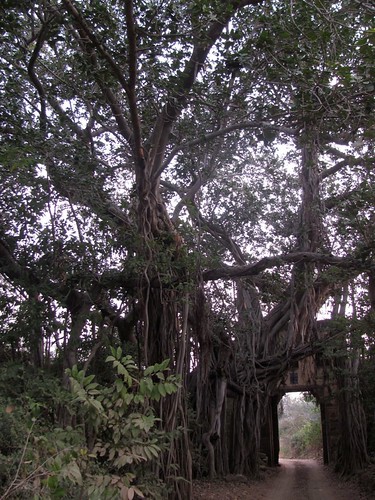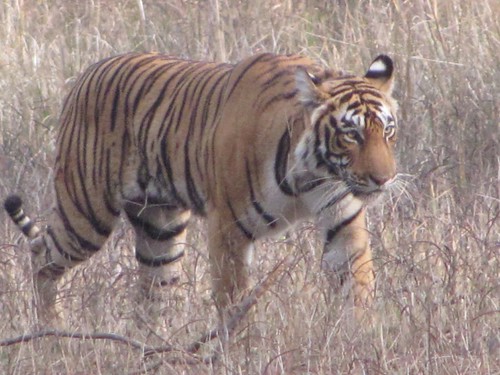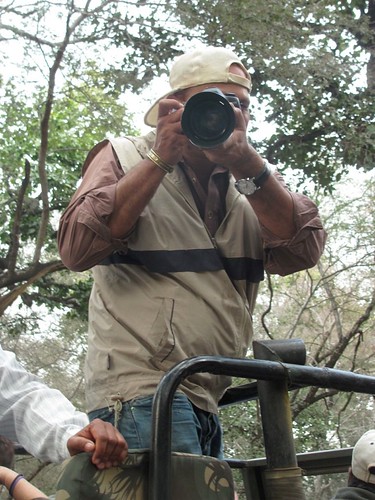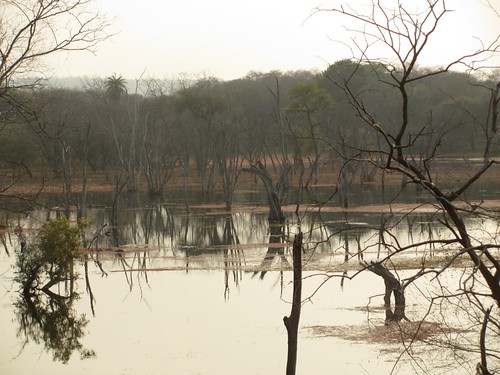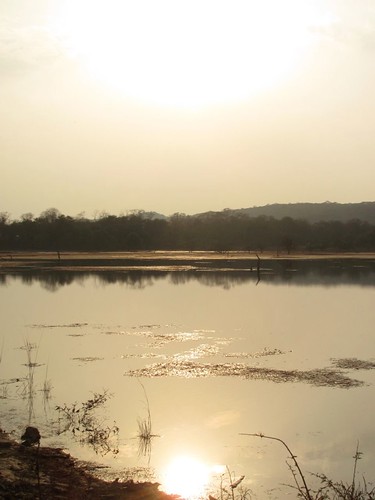what/why/when/where
I am working on a film project in Jumla, Nepal. You can follow progress of the project on Shakti Pictures blog. We started shooting in November 2011 and returned to Jumla for the second shoot in March 2012. And two further two shoots in 2013. We are now in post-production.
Continuing to work on the project, I now divide my time between Nepal, the UK & the US... and anywhere else I can find an excuse to go in the interim. This blog is a place for some stories of my adventures along the way.
Thursday, March 31, 2011
Thursday, March 24, 2011
Train of thoughts

18048 VSG Howrah Express - Hospet to Guntakal (A to B)
12975 Jaipur Express - Guntakal to Sawai Madhopur (B to C)
I love Indian trains. It is always with a mixture of excitement and nervous anticipation that I board a train in India. Climbing on board laden with bags, shuffling forward through the carriage looking for your berth, assessing your fellow passengers as they assess the new arrival, and then settling in. If it is already night, making your bed (sheets, a pillow and a blanket are provided in AC classes). I love that you can stand in the open doorway and watch the world go by. I love the fact that there is a constant stream of chai, coffee and food vendors coming through with all manner of snacks. If I’m even mildly hungry, I’ll crane my neck as the young man comes through shouting out the name of whatever it is (usually indiscernible to me), and my  fellow passengers, who by then have noticed I’ll try almost anything and will drink endless cups of sweet, hot liquid (they are only Rs5 and are very small little plastic cups) given half a chance, then explain what the morsel might be and if I haven’t sampled the latest offering before, I’ll duly fulfil my obligation to try it. Bhaji, pakora, ‘veg cutlet’ (as opposed to ‘non-veg cutlet’) – the majority of it is deep-fried something. Often only moderately tasty and invariably extremely greasy, this has yet to defer my excitement at the delivery of snacks. There is even a lunch and dinner service where they come and take your order in advance (of course completely necessary for long journeys), which I guess is why it is actually the Indian Railway Catering and Tourism Corporation (IRCTC).
fellow passengers, who by then have noticed I’ll try almost anything and will drink endless cups of sweet, hot liquid (they are only Rs5 and are very small little plastic cups) given half a chance, then explain what the morsel might be and if I haven’t sampled the latest offering before, I’ll duly fulfil my obligation to try it. Bhaji, pakora, ‘veg cutlet’ (as opposed to ‘non-veg cutlet’) – the majority of it is deep-fried something. Often only moderately tasty and invariably extremely greasy, this has yet to defer my excitement at the delivery of snacks. There is even a lunch and dinner service where they come and take your order in advance (of course completely necessary for long journeys), which I guess is why it is actually the Indian Railway Catering and Tourism Corporation (IRCTC).
It is mind-boggling when you actually examine the intricate network of the Indian railway system. They transport 11 million passengers and 1 million tons of freight per day, according to the sign. And the trains themselves go on forever. Although trains are commonly delayed for hours, it is still a logistical wonder that they run as well as they do when you think of how long the journeys are, how many stations there are and how many people they employ. How they organised themselves before computers is beyond me.
I was impressed to see the cleaning team in action working their way through with industrial equipment and attire.
and more snacks on the platform...
this is the view of one train in two directions, you can't see the beginning or the end
This trip I have only travelled Sleeper class for day trips as I am partial to the extra comforts that 3AC or 2AC affords for overnight and supposedly it is a bit safer in terms of theft. I certainly wouldn’t feel as comfortable getting out the laptop in Sleeper. Also, the wait list for tickets in AC classes tends to be shorter, although I suspect the turnover is less too so it’s probably much of a muchness. That said, Sleeper class is invariably more entertaining and stimulating as the people who can afford to travel in the other classes are usually middle-aged businessmen. Conversely, they usually have a better grasp of English so you can have more involved conversations. All classes have their pros and cons and it always ends up that you befriend almost everyone in the carriage and the journey becomes interesting on one level or another.
sleeper and 2nd AC
The journey from Hampi to Ranthambore National Park involved getting a train from Hospet to Guntakal (about 2 and a half hours) and then boarding my 33 hour train all the way to Sawai Madhopur in Rajasthan. I was feeling quite pleased with myself that I had found this particular route (it only runs twice a week) as it meant I could do most of the journey in one go. I was excited as it would be my longest journey to date. I think I am fond of these journeys for the same reason I like long flights – it is that time where you truly have time on your hands because there is only so much you can do. It is your transition time between two states, of location and of mind. Or in other words, you don’t feel guilty just sitting staring into space to pass the time.
Something I was not expecting to see - transvestites in saris working their way through the carriage. Apparently this is not as unusual as one might expect (and I did see it on another train a few days later). They come through and clap their hands twice - clap, clap - and then passengers (men) give them money for a blessing, or to avoid embarrassment as otherwise they might be singled out. It seems that everyone seemed to understand the system, much like no one batting an eyelid as singing/dancing children come through busking, or cripples dragging themselves down the aisle begging... I was surprised and highly entertained by the spectacle and the lovely 'ladies' were wonderfully camp, posing for their photos. It made me even more curious about the gay community in India, as for the most part, it is so covert. Would make an interesting documentary...
Sunday, March 20, 2011
Memories of Hampi - part II - Impromptu Excursions
There is one ATM machine in Hampi. The sign outside said it was broken due to no power, but it looked like it was on. No luck. I tried again the next morning and still not working. Concerned with not being able to pay my guest house bill before my departure the following day, I inquired where the next nearest ATM was. Kamalapuram, the village 4km down the road. I got a quote from a rickshaw driver. Rs200 there and back. I'd been toying with renting a scooter for the day to tour some of the ruins (they go on for miles) and for Rs250, it made sense to leave the rickshaws and make my first port of call Kamalapuram. It was a pleasant drive through the countryside - paddy fields, temples here and there, rural life going about its daily business. Old men in lunghis on bicycles, herds of goats being ushered up the road, the occasional scooter or motorbike, usually with two or three men, whizzing past, cow-drawn carts with loads of hay – all painting the image of local, rural life. I think I drove around the whole village before I found the ATM but it was interesting just to observe (resisting the urge to stop and take photos as I was turning enough heads as it was). I was dismayed to find that this ATM was also out of order, so Hospet, another 13km, with its multiple cash machines (I think at least three) beckoned. Feeling quite pleased that I had decided against the rickshaw as that would have then bumped my fare up significantly, I set off, content to just be out and about.
A little way down the road I was startled to see a motorbike on its side and a man on the ground, with the driver struggling with the bike. An older gentleman was reeling on the road, a few grazes and trickles of blood. The younger driver was shouting at him, I thought, rather unsympathetically. When the old man tried to stand but staggered back, I was concerned he was concussed and felt even more agitated at the younger man’s attitude, but my remonstrations fell on deaf ears. As with any occurrence anywhere in India, people suddenly appeared to stand and watch the spectacle and it was at that point that a young, clean cut man explained to me that the old guy was drunk, really drunk. In hindsight, I guess he just fell off the back of the bike, which suddenly made the whole scenario fall into place. The young guy was still cursing but eventually they were back in position and off down the road again. No serious damage, and I guess if your Dad/Uncle was that drunk so early in the day, you wouldn’t have much patience with him either.
The rest of my journey into town was thankfully uneventful and it was with a feeling of accomplishment that I parked up on the main street, having navigated through the town traffic. After getting my cash, I decided to grab a masala dosa (a large, thin, crispy, pancake wrapped around a mound of potatoes and onions and served with samba and coconut chutney), my absolute favourite thing on the South Indian menu. There was a place opposite the bus stand Udupi Sri Krishna Bhavan, that had been recommended. After I’d eaten, I ordered more tea, and sat and wrote for a while, much to the curiosity of the staff. I think most people come in, eat and then leave fairly quickly. There was a beggar stationed just outside the door to catch people with full bellies. I watched him as he assumed the position, hand extended as people approached, and then relaxed in between, chatting to the guy on the stall outside. We had made eye contact a few times, and particularly as I had taken photos of him, when I paid my bill, buying myself some pakora, I bought an extra bag Rs25 and gave it to him as I left. He took it graciously and then looked up at me expectantly as though I might have more to give, preferably cash. I just smiled and shook my head. He smiled back. Worth a try, I suppose.
On my way back, I meandered around, stopping at random little temples or to take photos – the rest of the day stretched out before me. I stopped in a small village to admire a temple with very colourful ornate carvings opposite a school.
I was accosted by a couple of kids out on break, munching on snacks and asking for pens. No pens. I took some pictures and then who should appear but my pint-sized suitor from sunset, Manju. Break was over and he asked me to come to his school. Since I was standing right outside, I thought, why not? Let me go and ask your teacher. I went to park the scooter inside and much to his delight, I let Manju jump on as I rolled into the playground. By now there was a hubbub of excited children as the foreign spectacle made her way towards the school building to greet the teacher.
 Varalakshmi, Manju’s teacher, kindly agreed to give me a tour. We went from class to class, talking about the school, the subjects and the students. She was the English teacher as well as Hindi, P.E. and Yoga, so she spoke good enough English for me to be able to ask her questions (she was surprised to hear that English is Manju’s ‘favourite subject’). Ages 6-14 years, there are 170 boys and 150 girls. All of the students live in a 2 km radius. Six months of the year over a quarter of the students are taken out of the school to work in the fields cutting sugar cane. Girls do better than boys but after 14 years, half the girls will not go on to further education but get married instead. As we walked from class to class a small entourage trailed behind us, led by Manju who was in his element. After visiting a few classrooms, I thought I should let them get back to work. I asked her if they were short on supplies, and feeling quite flush as I’d just been to the ATM, offered Rs500 to go towards books or pens. After
Varalakshmi, Manju’s teacher, kindly agreed to give me a tour. We went from class to class, talking about the school, the subjects and the students. She was the English teacher as well as Hindi, P.E. and Yoga, so she spoke good enough English for me to be able to ask her questions (she was surprised to hear that English is Manju’s ‘favourite subject’). Ages 6-14 years, there are 170 boys and 150 girls. All of the students live in a 2 km radius. Six months of the year over a quarter of the students are taken out of the school to work in the fields cutting sugar cane. Girls do better than boys but after 14 years, half the girls will not go on to further education but get married instead. As we walked from class to class a small entourage trailed behind us, led by Manju who was in his element. After visiting a few classrooms, I thought I should let them get back to work. I asked her if they were short on supplies, and feeling quite flush as I’d just been to the ATM, offered Rs500 to go towards books or pens. After 
 has small stumps instead of arms with a few fingers dangling maybe six inches from his shoulders. He draws with his feet. I was so impressed with his manner and the example he was setting to these children that you can overcome the disadvantages that life might bring you, rather than begging in the street. It seems the government only pays for girls to do art class but the boys can watch, so they stand around looking over the girls shoulders.
has small stumps instead of arms with a few fingers dangling maybe six inches from his shoulders. He draws with his feet. I was so impressed with his manner and the example he was setting to these children that you can overcome the disadvantages that life might bring you, rather than begging in the street. It seems the government only pays for girls to do art class but the boys can watch, so they stand around looking over the girls shoulders.
There was a commotion outside and kids were tearing out of the classrooms round to the front of the main building. When I inquired what was happening, ‘mimicry’ was the reply. A bit confused, I followed the Varalakshmi round as (separate) groups of boys and girls were seated cross-legged facing the front building. There was an old man with a hat sitting on a chair. After everyone (it must have been the middle years only, but including Manju and his crew) had settled, the ‘show’ began. It turns out this man tours around schools and all the children bring 1 rupee, so he makes about Rs100 as a school entertainer. The mimicry referred to the section where he did cow and goat impersonations, but he also sang songs and did a sort of slapstick routine and got kids out of the audience to do role playing. As with any clown or kids show, children are entertained at such a wonderfully simple level, he had them all in stitches and they soon stopped staring at me sitting next to the teacher, as they became mesmerized by the performance.
How often does he come and do this? Once a year. So I happened to show up at the school on a good day? You are our guest of honour, replied Varalakshmi. I left after the show, a couple hours of light left for me to explore the ruins. Not much time to cover miles and miles but I figure the ruins have been there a while so they will probably still be there next time. The few hours I spent at Kaddirampur Government Higher Primary School was an opportunity I wouldn’t have missed and being guest of honour at this annual show, only happens once a year.
... and I did see some of the thousands of ruins.
Friday, March 11, 2011
Memories of Hampi - part I

For so many years, this magical place held an allure to me - a place I have known I wanted to visit since tales almost twenty years old had enticed me. And since, every traveller I crossed paths with was keen to expend the wonders of this holy place. I didn't have as much time as I would have liked as my window was wedged between meeting Julian in Bangalore and Caroline in Ranthambore National Park. Their dates I had no control over, so five days would have to do... for now.
Hampi Bazaar is a small village in the heart of Karnataka surrounded by hundreds of temple ruins, framed by a stark, boulder-strewn landscape. It is a very sacred place and in the village itself they do not sell meat or alcohol (although this is India, so anything is possible). In Hampi Bazaar, the Virupaksha Temple towers over the hustle and bustle of guest houses, tourist shops and restaurants. Auto rickshaws weave their way through the narrow alleys, dodging languid cows and barking dogs.
This is a major traveller's spot, with many people making it their excursion from Goa so it straddles this hinterland of 'real' spiritual India, with the laid-back atmosphere of Goa's beaches.. The north edge of Hampi Bazaar is the Tungabhadra river and on the northern banks the sleepy area of Virupapur Gaddi, or more commonly referred to as ‘the other side’. There is a boat that ferries people throughout the day until dusk for Rs10. Prior to my arrival in Hampi, I had heard debate about which side was better to stay, because after dark you need to make sure that you are on the same side as your lodging or you are stranded. The Hampi Bazaar side is a mini-town, although it is really a village – it bustles with the sounds of village life, the thumping of clothes on wet stones, the voices of family life, goats bleating, autos beeping. Whereas the other side is really a dusty stretch that runs parallel to the river with a series of laid back restaurant/guest houses and backed by paddy fields and the magnificent boulders on the north horizon. It is way more chilled and the sort of vibe where the days could roll into one another endlessly. Both have their merits and given more time I would have probably stayed for a spell on both, but aside from the sheer laziness of not wanting to relocate and manoeuvre myself and bags down the steps, onto the boat and up the hill on the other side, for only a day or so, I was enjoying being surrounded by village life, as opposed to slipping into another traveller ‘scene’.
view from 'the other side'
Having arrived early in the morning after an overnight train from Bangalore to Hospet, a local bus (Rs10 as opposed to Rs250 in an autorickshaw) to Hampi itself, and then waited for a room to come free (most guest houses have 9am checkout as the majority of the arriving guests come in on very early overnight trains and buses), I was unsurprisingly a little tired on my first day. So I took it easy, which seems to be the way of things on both sides. The riverside café 
Forty-eight hours in Bangalore
Two days in a place is never enough to really get a sense of what it is about, but there were some things about Bangalore that were obvious upon arrival. The very first observation was the intense traffic congestion, illuminated by my 7pm arrival during the throng of rush hour. I had gone to the pre-paid auto rickshaw booth and got my slip telling me my journey should be Rs162 much to the dismay of the shifty character who had tried to intercept me offering a ride for a mere Rs250. Piled my stuff into the rickshaw and settled in for the ride through this new city. Ten minutes later, I was still on the road leading out of the train station. It was comical the autos and scooters, curling around, vying for that small space, everyone breathing in the fumes from the vehicles in front, sat there feet away from each other in what seemed like an impossible stale mate. But suddenly, movement, a ripple, a surge and then break free and make a run for it until the next clump of traffic. Driving through as the night unfolded, it was much of what you would expect of any Indian city, the hubbub of street life, shops closing, chai stalls and restaurants with the requisite crowds lolling about, people making their way home, buses crammed full, other rickshaws, more scooters and motorbikes always with multiple people and items balancing on them, the other worldly wail of call the prayer as we passed a mosque… just another weekday night in the city.
Being the tech capital of India and the only really cosmopolitan city in the south it offers and costs a lot to the weary traveller. Here you can find decent coffee (India’s answer to Starbucks ‘Coffee Day’ is a favourite, but you can find Costas and Baristas too), you can eat sushi and you can drink expensive cocktails in swanky bars that double as nightclubs playing to an enthusiastic young crowd. Although everything does shut down around 12.30am that is still much later than most places other than Mumbai and Delhi. Young stylish girls dressed in western clothes swinging back beers would be unheard of elsewhere in south India, but here, the tech boom seems to have pushed the youth culture further forward – maybe being so connected has made western culture and customs seem more attainable or the mantle of the ‘modern’ city and progress has simply soaked into the psyche. The Bangaloreans do pride themselves on their progressive city and attitudes so it’s not surprising and an insight into the India of the future most likely.
 Or at least one aspect of it. Some parts of Bangalore, like the Krishnarajendra (City) Market, are still very much stuck in time. Like all produce markets in India, there is a wonderful assault on the senses as soon as you find yourself in the midst of the throng; colourful piles of produce, the hum of barter and chatter, activity, negotiation and the stream of movement as people make their way through. Outside is mainly vegetables, and inside,
Or at least one aspect of it. Some parts of Bangalore, like the Krishnarajendra (City) Market, are still very much stuck in time. Like all produce markets in India, there is a wonderful assault on the senses as soon as you find yourself in the midst of the throng; colourful piles of produce, the hum of barter and chatter, activity, negotiation and the stream of movement as people make their way through. Outside is mainly vegetables, and inside,  down the stairs, the darkness parts into splashes of brilliant colour under hanging lights and intensely aromatic scents of flowers and herbs. Piles of yellow, orange, pink garlands wound around in mounds, baskets of fresh herbs fanned out in a wheel – wandering around, a soothing respite in the fragrant dark.
down the stairs, the darkness parts into splashes of brilliant colour under hanging lights and intensely aromatic scents of flowers and herbs. Piles of yellow, orange, pink garlands wound around in mounds, baskets of fresh herbs fanned out in a wheel – wandering around, a soothing respite in the fragrant dark.
Adding to the entertainment of this excursion was the fact that my companion, my dear friend Julian, looks vaguely reminiscent to one of the England cricket team’s star players, Andrew Strauss – and he looked the part in his linen blazer. As England were due to play in Bangalore the following weekend, it would not be so far-fetched to think he might be in town, so everywhere we went people accosted him and of course, I affirmed that in fact, he was the famed cricketer. So, much time was spent with people wanting photos taken with him, usually with our cameras and then the hopeful expectation that we’ll print and send them (by post to laughably vague addresses) as email is still an abstract reality for this cross section of the Bangalore community. However modern, progressive and switched on certain groups of society are here, this is still an Indian city full of many people going about their daily business with no thought to the development on their doorstep.
